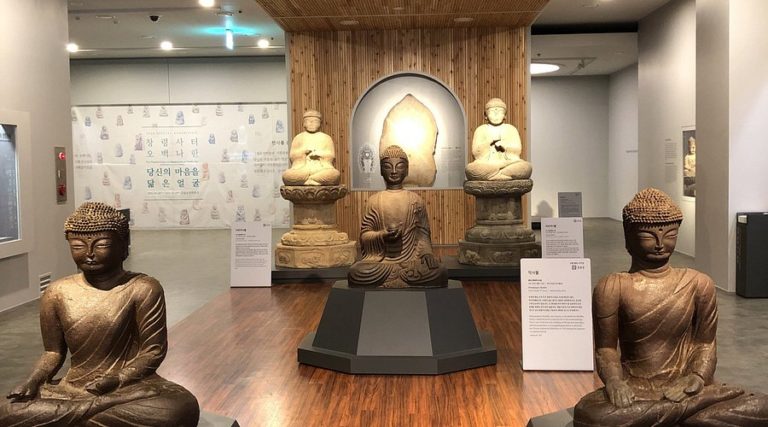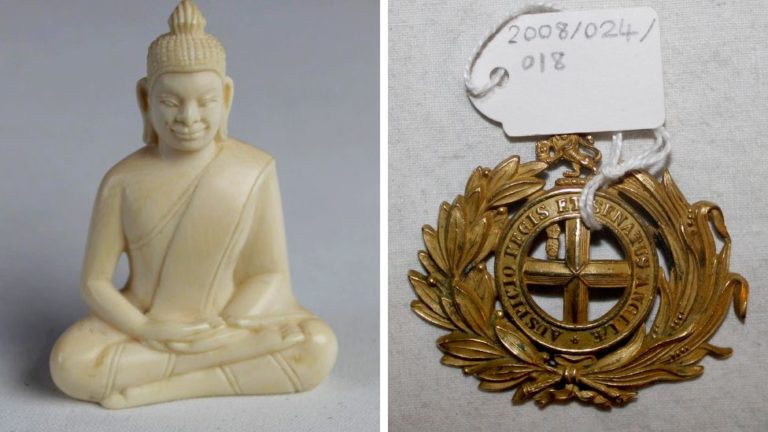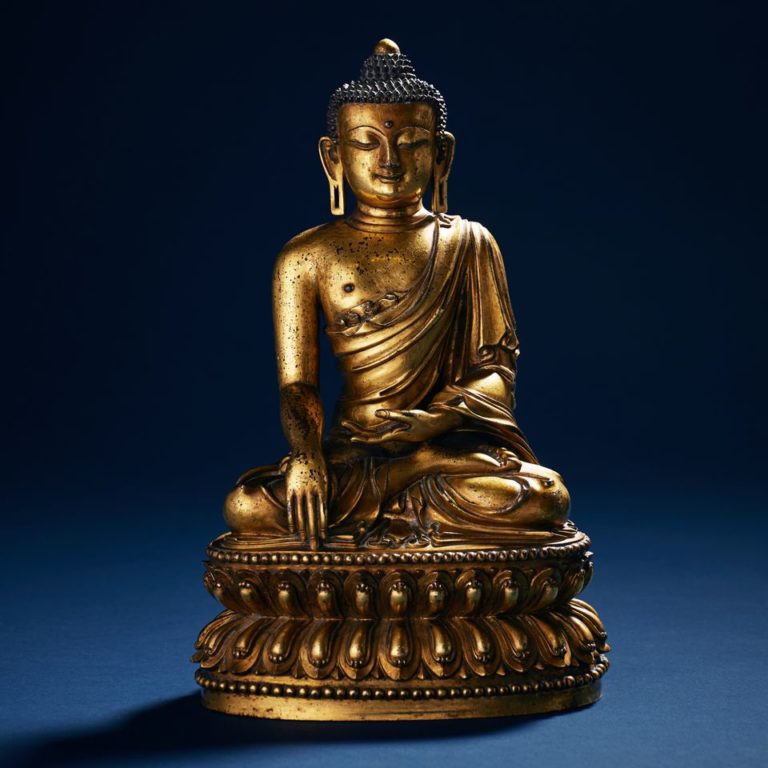It is a medium size stone sculpture of Queen Maya and believed to have been commissioned during Kushan era

One of the magnificent, and very rare, stone sculptures found way back at Pandrethan (ancient Purindistana), and presently showcased in the archaeology galley of Srinagar’s largest SPS museum, depicts wonderful scene of the Lord Buddha’s birth.
It is a medium size stone sculpture of Queen Maya and believed to have been commissioned during Kushan era (100-400AD) when the progressive thought of Buddhist doctrine known as Mahayana Buddhism was being reshaped here. Symbolizing the grace of Gracie Buddhist art, the elegant sculpture in its high relief depicts few images with the main image of a crowned queen identified as the queen Maya, the mother of Lord Buddha.
She is shown wearing a long pair of ornament connected with the crown, she also wears two necklaces, one loose and other one tight, formed of beads. She is shown wearing a set of bangles studded with jewels. The sculptor besides other human motifs also depicts the curved branch of a tree under which the queen looks relaxing. It depicts the birth scene of Sidhartha which later on came to be known as lord Buddha. This sculpture also reflects the century’s old cultural practice of the pregnant women of the eastern world, conceiving in their parental home.
As per Buddhist traditions, Buddha was born in a royal family at Lumbini in about 563 BC. This ancient Janapadha (state) was then called Kosala which today partly falls in Nepal. His early life and works are very much mentioned at length in the classical Buddhist records, and in the mainstream chronicles as well.
Tradition states that when Queen Maya was to conceive her child, her parents sent Prijapati, her younger sister, to her in-laws to bring Queen Maya back to her parental home. While back to their parental home, Queen Maya suddenly felt the pangs of labor pain. Since she was accompanied by her younger sister who was a brave lady, she extended her own support and carried him to a nearby adjacent garden called Lubni garden. They both stood under a shade of the tree later known as Ashokan tree. It was in this garden under the shade of this tree that Buddha was born, as such she could not conceive her baby in her parental home but later on was shifted to her parental home and was taken due care by her parental family. His birthday has been posthumously also celebrated here in Kashmir and such a wonderful sculpture was commissioned perhaps to mark his birthday.
In its iconographical details the upper part in relief depicts image of Queen Maya in centre, her sister Prajapati to her left, a small figure of some another deity to right and a defaced figure of some goddess towards left up, shown weaving fly-whisk. The Maya is shown placing her left hand on the shoulders of her sister while with right hand she holds the branch of the tree under which she is relaxing. She is depicted getting support from her sister and the branch of the tree and this was time when prince Siddhartha was born, who later came to be known as Lord Buddha.
Although the centuries old practice of pregnant woman going to her parents home to deliver child is not nowadays followed so strictly, but there were the times when it was a mandatory, particularly in eastern cultures, that a pregnant women in the seventh and eighth month of his carriage was supposed to be in her parents’ home.
It looks purely a social and cultural practice followed almost in the eastern cultures without any religious divide. It is practiced in almost all communities of the east which included Buddhists, Hindus, Christians, Muslims and Sikhs.
There may have been certain other reasons for the evolution of this practice, but the most important factor has been to extend the physical and physiological support to the pregnant women as she would feel relaxed in her parental home, where she would get every kind of support and a loving environment. This type of cordial atmosphere she would not expect in her in-laws’ home.
In fact in olden conservative societies, the plight of daughter in laws was well understood, as this practice can also be linked to cultural beliefs about postpartum care and role of extended loving families in parental homes.
On the other hand, pregnancy and then delivery in this modern scientific age is still considered a critical time period for pregnant women. One can easily understand the plight of the ancient pregnant women. In ancient times when there were no such scientific methods available to the pregnant women to carry and deliver the child. The tradition of providing them the parental care has been the only option to help them physically and mentally. This kind of support has been very helpful for the women during those critical times.
And it is due to these social and cultural practices that this tradition has not yet disappeared. Indeed, nowadays hardly any pregnant woman delivers his child at home. Most of the child births take place in nursing and maternity homes. But the pre and post delivery periods are still cared by the real parents of the women and not by her in-laws. In this practice when pregnant woman would enter in seventh or eighth month of her pregnancy, the parents of the woman would send somebody (mostly sister or aunt) to her in-laws and call her daughter back to her parental home. Her in-laws would also bid her farewell and pray for her safe conceiving.
Generally speaking this practice has been the most popular practice in ancient cultures followed not only in commoners of the society but even in the royal families as well. While tracing its origin it is widely believed that it has been the most conservative tradition in ancient Indian and Chinese cultures and is widely mentioned in ancient Chinese and Indian records.
In Kashmir this cultural practice is still practiced, however, instead of delivering in parental homes women mostly deliver in maternity homes. This has happened due to advancement of medical sciences and availability of maternity homes. But the practice of bringing back of pregnant woman to parental home is still very much in vogue. It has been the popular tradition of ancient Kashmir, and the theme of the sculpture discussed above is witness to this cultural practice.
The writer is a senior archaeologist and Author




